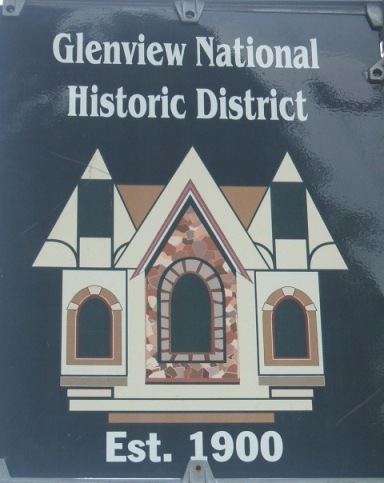Glenview Community Development Partners, Inc.
Our Information
- Contact List
- Our contact information...
- Newsletter Archive
- Post Your Newsletter
About Us
Glenview Community Development Partners, Inc.

Architectural Styles
The Glenview Historic District is a remarkable intact, well-kept area that preserves the architectural styles, scale, and landscape features of Memphis' early automobile suburbs. Houses in the Glenview Historic District represent a veritable "catalog' of popular home styles of circa 1910 to the eve of World War II.
About our association

History of the Neighborhood?
The conflict over black property ownership in the Glenview Historic District reveals how the housing market for blacks was strained in the the post-war period. Spawned by several initiatives begun by a local civil rights lawyer, in the establishment of a integrated law firm, plus a Savings and Loan company that could provide mortage loans to middle class blacks wanting to acquire better homes, opportunities were expanded for blacks to acquire homes.
Thus, by 1956, the stage was set for initial attempts to integrate the Glenview Neighborhood. From 1956-58, several African American families acquired homes in the district. The resistance they met, however, indicates how deeply the racial divide ran in Memphis and how significantly it affected the housing market.
Glenview residents did not greet the arrival of the firt black family with pleasure. The Rev. Charles H. Mason, Jr. (Church of God in Christ - Lauderdale and Georgia Sts.) the largest Pentecostal Congregation in Memphis, bought a Tudor Revival styled house at 1755 Glenview Avenue in 1956 from white couple moving to Illinois. This was brought to the attention of the Glenview Civic Club (white) who wantd to seek a white buyer for Mason's house and to discourage other property owners from selling to blacks. Newspaper reports chronicle the efforts of white Glenview residents to prevent blacks from buying homes in the area. Violence marked the first months after the Mason family moved into Glenview in February, 1958, after having waited over 18 months. A burning cross was placed in the front yard. Arson was the next tactic used by white opposition to the integration of Glenview. Mason's church burned down on February 14, 1958. The cross burning incident preceded this fire by only a week, and Mason's home was burned on the evening of March 3, 1958. None of the family was hurt, they had been staying elsewhere subsequent to the cross burning.
By the spring of 1958, the Glenview Plan's (white) effots to buy out and discourage black property owners were clearly not working. The second black home buyer was another prominent minister, Rev. R. W. Norsworthy, (Mt. Moriah Baptist Church, Orange Mound) and an official with the NAACP. The white owner expressed regret about leaving his home at 1745 Glenview, which he had built in 1921, but felt impelled to leave "because of the encroachment of black residents on his block".
By 1959, a third black family had moved into another Glenview block, at 1711 Glenview. Dr. and Mrs. Joseph W. Westbrook were educators. He later became an area assistant superintendent of Memphis City Schools, while Mrs. Westbrook became a project director with Memphis City Schools.
The residents typify a diverse group that shared in holding good paying jobs, valuing education, desiring a house in a safe and attractive neighborhood of which they could be proud. While a fair percentage of the residents were first time homeowners, a greater percentage had owned their own homes before moving to the area.
What Makes the Neighborhood Unique
The architectural stles make this neighborhood distinctive. Glenview's modest homes represent a variety of styles that were popular throughout the suburbnizing United States in the years before World War II. Beginning with bungalows, the houses in Glenview also include Tudor, Colonial, Spanish and Dutch Colonial Revival styles, Craftsman style, minimal traditional style, and Foursquare houses. These styles are among the type of plans published by the Architects' Small House Service Bureau and domestic magazines during the first four decades of the 20th century. In this period, the progressive influence in home design stressed the organic unity of using a single, coherent style for the interior and exterior of the house. The similar scale of all the home in Glenview insured their harmony. Individual blocks also tend to exhibit a similar style.
What Makes the Neighborhood Strong
Our strength is the stability of the neighborhood, reflected in the tenure of residency of a majority of the original families since the early sixties, and the cooperative efforts in keeping up the the appearance and general condition of their properties.
The strength of the neighborhood is also reflected in the continued involvement of the residents of the neighborhood in the religious, political, social, and economic life of the city in general through their participation on various boards of directors of both private and public organizations and institutions as well as social agencies.
Email us
gdcp_inc@bellsouth.net


